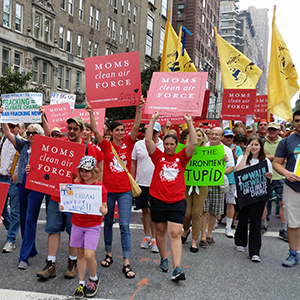
We know many of the major sources of mercury pollution in the US come from coal-fired power plants. While coal-fired power plants are the largest source of mercury pollution, mercury emitted from cement plants is also is harmful. According to SourceWatch, With little or no coal reserves, California has no history of coal mining. But, California is one of the country’s largest producers of cement. Read the article below from California Watch to find out out how and why mercury emissions from one cement plant has California residents concerned for their health and safety:
At the end of an empty road just north of Highway 58 and past the outfield wall of an abandoned high school looms the towering Lehigh Southwest Cement plant – a behemoth kiln that belches mercury and other toxics into the air, as it has for decades.
After a round of publicity and public outcry in 2006 over mercury contamination from the plant, Lehigh’s emission rates for the deadly chemical plummeted.
But now, the mercury emissions have spiked back up to some of the highest in the nation.
The Lehigh Tehachapi plant produced 872 pounds of mercury in 2010, according to the Environmental Protection Agency’s Toxics Release Inventory data – the most of any cement plant in California and the second-highest among all cement plants in the United States. In 2007, mercury emissions had dropped to 144 pounds, and then began climbing again.
Inside the plant, workers burn coal to cook limestone mined from the nearby hillside at more than 2,600 degrees. Both materials contain mercury, which then escapes into the atmosphere. Once in the air, scientists say, the mercury settles on the ground and contaminates the soil and water – and, eventually, fish that are eaten by humans.
California, rich in natural resources and massive in size, is one of the country’s largest producers of cement, with eight production facilities on the EPA’s list of mercury emitters. As such, a debate in Congress over controlling emissions from cement plants could have a major impact on the industry here.
The Obama administration and EPA have promised to impose strict limits on some of the most harmful pollutants emitted from cement plants, like mercury, hydrogen clouds, toxic organic pollution, arsenic and hexavalent chromium – the pollutant made famous in the 2000 movie “Erin Brockovich.”
Jim Pew, a lawyer with the environmental group Earthjustice, said the move by the EPA is long overdue.
“These plants were supposed to be in compliance over a decade ago,” Pew said. “They have so successfully played the system that they have avoided these standards for years.”
Under the new rules, which are scheduled to begin in September 2013, plants will be banned from emitting more than 55 pounds of mercury per million tons of cement produced. The cement industry said complying with the regulations could cost as much as $3.4 billion and force the closure of some plants, but federal regulators put the cost at less than $1 billion.
Andy O’Hare, vice president for regulatory affairs at the Portland Cement Association, which represents cement plants that use the “Portland” method of cooking limestone in kilns, said the regulations could cripple small towns across the country that rely on cement plants to provide local, well-paying jobs.
For Lehigh’s Tehachapi plant, which employs about 100 people, controlling mercury emissions “will be one of the primary challenges we have,” said Tom Chizmadia, a spokesman for the cement company based in Texas.
The limestone mined from the volcanic earth near Tehachapi is naturally high in mercury, the company notes, and transportation costs prohibit importing limestone from great distances.
“We’re looking at a number of technologies and operating systems to see how we can best meet” the new mercury emissions standards, Chizmadia said. “Our focus is to meet that, so we can have the facility operating.”
Despite this federal effort, environmental activists remain skeptical that anything substantial will get done after decades of pollution and what they said is inattentive oversight by local air pollution boards.
In Southern California, environmental activist Jane Williams has waged a fight for years against the eight cement kilns operating in Kern and San Bernardino counties. She remembers driving toward Las Vegas along the old Route 66 at night with her infant son when she passed TXI Riverside Cement’s plant in Oro Grande.
The air became so thick, she said, that she could not see well enough to drive. So she stopped the car, got out and started videotaping what she saw. She sent the tape to the Mojave Desert Air Quality Management District, but never received a response.
“This kiln is just out of control,” she remembers thinking. “(The air board) did nothing. Nothing.”….CONTINUED HERE




